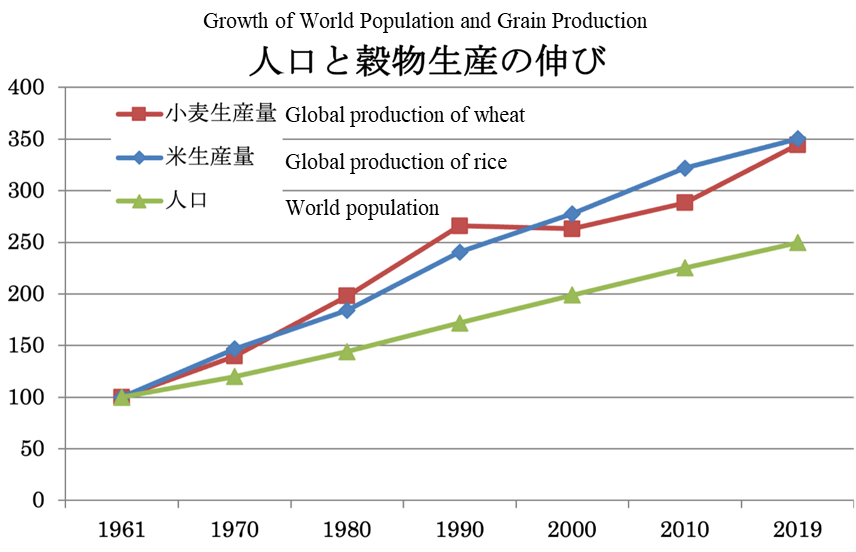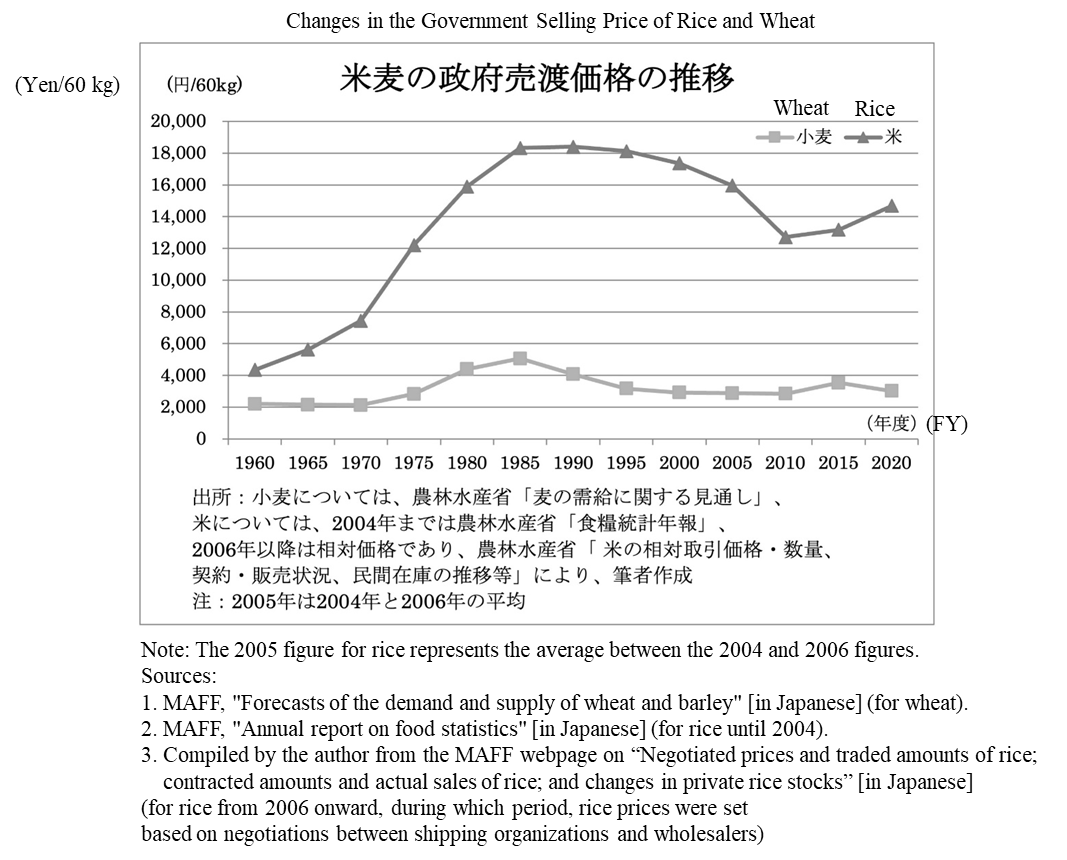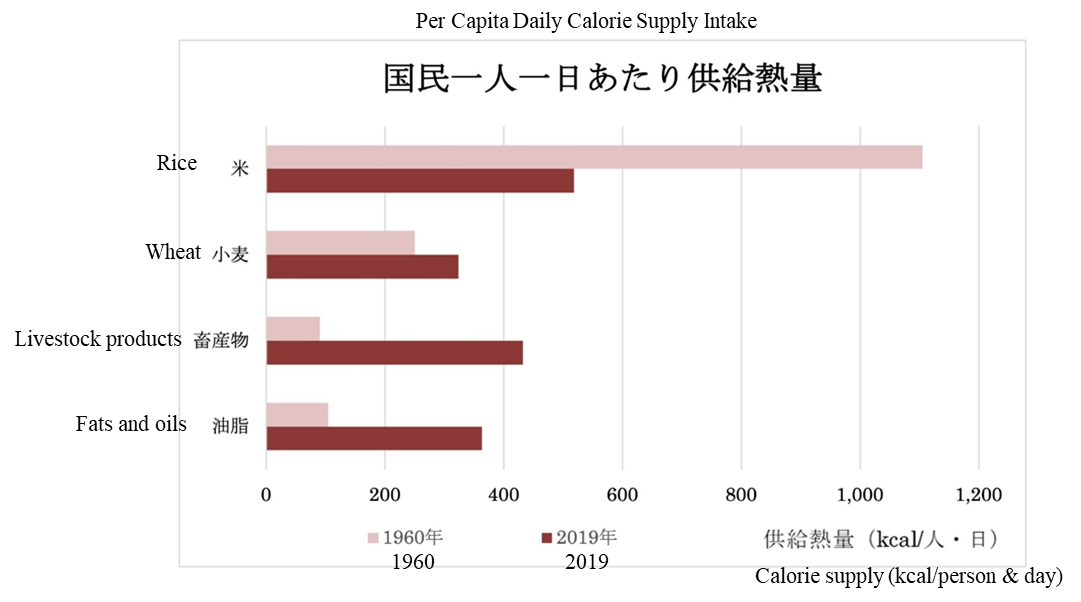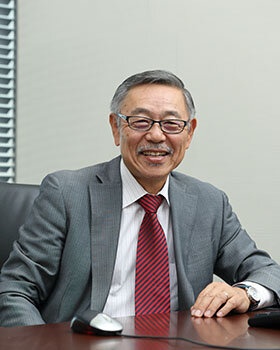Media Global Economy 2022.04.25
Japan’s Agricultural Policy Might Starve the People in Times of Contingency: A Lesson from the Ukraine Crisis
The Great Famine in Ukraine Would Be Repeated in Japan in a Taiwan Contingency
The article was originally posted on RONZA on March 23th, 2022
A symposium on food
On March 12, NHK, Japan’s public broadcaster, aired a TV symposium program titled something like “a crisis creeping up on the dining table: the country’s food self-sufficiency is as low as 37%.” The hanging banner behind the platform read “Japan’s self-sufficiency in food is a shocking 37%.”
The program first focused on a local government’s initiative to provide school lunches that use locally produced ingredients where possible. In the latter part of the program, all the panelists agreed that the country’s self-sufficiency should be raised by protecting domestic agriculture. Their logic boils down to the following:
“Global food prices have been continuing to post record all-time highs on the back of global population growth among other factors. This trend is irreversible. With a growing trade deficit and waning economic power, Japan will be increasingly unable to buy food on the world market. That underscores the need to produce food domestically. The declining food self-sufficiency stems from the country’s increasing dependency on imported grains for most of the demand for animal feed. To rectify the situation, the government should promote the production of feed rice.” The theme of the discussion was how to raise Japan’s self-sufficiency in food, but the real intent must have been to stress the need for the central government to continue its support for the production of feed rice as the panelists concluded. In fact, much time was devoted to this part.
I do not know about other TV symposium programs because I have not had the chance to watch them. Nevertheless, my understanding is that a symposium is normally a forum where people of different positions and opinions exchange their views. In this particular symposium, however, all the panelists discussed the issue from the same perspective. They were an official from the Japan Agricultural Cooperatives (JA) group, a TV personality, an agricultural economist, and a Marxian economist.
The case made by Japan’s agricultural circles contradicts the facts
The recent bestseller Factfulness argues that many people discuss global income distribution without factual knowledge or data about the issue. Myths abound in the world of agriculture in particular. Let me examine the panelists’ arguments in light of a number of facts.
The first fact is that world grain prices in real terms have been on a long-term declining trend. The graph below shows changes in the inflation-adjusted real prices of corn, wheat, and soybeans over about 100 years compiled by the US Department of Agriculture. The prices have been on a declining trend despite some temporary increases. The world population more than quadrupled over the same period, but there were no chronic food crises. The latest wheat prices are all-time highs, but they are in nominal value, not real value. In terms of real value, the current levels are below the normal year levels in the 1970s. Economists should not use nominal values when comparing the past and current prices.
There would not possibly be a sudden population explosion in 2050. If population growth increases food prices, they should be on the rise by now. The panelists’ argument contradicts the facts.

Graph: Changes in Inflation-Adjusted Grain Prices over the Long Term
Source: USDA https://www.ers.usda.gov/data-products/chart-gallery/gallery/chart-detail/?chartId=76964
The next graph shows changes in the world population and the global production of rice and wheat, with the indexes in the base year of 1961 being 100. The production of both rice and wheat grew by a factor of 3.4, outpacing the world population, which increased by a factor of 2.4. Such an increase in grain supplies has kept grain prices low.

Sources: Compiled by the author from FAOSTAT (for grain production) and World Bank data (for the population)
The panelists seemed to argue that only countries with a trade surplus can import food and that those with a trade deficit cannot. If this argument were correct, Japan could have been unable to import food since 2011. But that is not the case. Furthermore, food-exporting countries more likely have a trade surplus in the first place. Thus, their logic would go that all countries in the world post a trade surplus, be it food importing or exporting countries. That could not be possible. Imports for some countries mean exports for other countries, and trade is balanced on the global scale. There is no shortage of countries that post a trade deficit but import food. And even if such countries become weak economically, they can afford to buy grains as long as their prices fall accordingly.
Domestic farm products several times more expensive than international prices
The panelists argued that there should be a shift to domestic farm products in light of the prospect that farm products will be increasingly unavailable on international markets. The fatal flaw (illogicality) of this argument is that it neglects the fact that domestic products are priced several times higher than their counterparts available on international markets. If imported farm products became unaffordable, domestic products must have become unaffordable earlier. The domestic prices of such imported farm items as wheat, sugar, and dairy products in Japan are higher than international prices because of the tariffs involved. If the Japanese economy wanes to the point that domestic products are no longer affordable, all it should do is to buy imports without tariffs. It would not take the trouble to buy expensive domestic products.
Surprisingly, the panelists maintained that domestically produced rice is immune to the latest spikes in food prices because tariffs insulate it from the international market. Limited supplies of rice under the acreage reduction program, as well as the protection of the domestic market with tariffs, put up the prices of rice higher than the domestic market prices. This arrangement has long forced Japanese consumers to buy rice at a price two or three times higher than international prices. Rice on the international market will be cheaper even if its price doubles. It must be that the panelists have never taken the Japanese public or consumers into consideration.
Who has reduced Japan’s food self-sufficiency?
The country’s self-sufficiency in food has dropped to 37% from 79% in 1960 because the Japanese diet has been increasingly westernized, according to the Ministry of Agriculture, Forestry and Fisheries (MAFF) and most researchers. Nevertheless, it has long been predicted that the demand for rice will fall while the demand for wheat in the form of bread and the like will rise. There is a fungibility between rice and wheat from the perspective of consumers. The Japanese government should have taken a policy of reducing rice prices to control its production and increase the demand for rice while raising wheat prices to boost its production and control the demand for wheat. In reality, however, it implemented a policy that has achieved the exact opposite. The policy of keeping rice prices high and wheat prices low has resulted in the overproduction of rice and a steep drop in wheat production. Even after the food control system was abolished in 1995, the rice prices that are higher than the equilibrium prices have been kept high under the acreage reduction program, which pays subsidies to farm households in order to reduce rice supplies.
One of the reasons why Japan’s food self-sufficiency has fallen is that the government raised rice prices substantially higher than wheat prices as shown in the graph below:

Changes in the Government Selling Price of Rice and Wheat
Since the introduction of the food control system in 1942, MAFF has been importing both rice and wheat as a state trading enterprise. It could have kept the consumer price of rice low even if it raised the producer price of rice. This could have been made possible by imposing a substantial surcharge on imported wheat (a de facto tariff used to finance subsidies for domestic wheat production, also known as “mark-up”) to raise the (selling) price of wheat and use the margin gained from it for rice.
Over time, however, part-time farm households increased in proportion. The rice planting season increasingly shifted forward to the Golden Week (a holiday-studded week from late April through early May), when such farmers took a number of days off from their non-farming jobs. This made it difficult to practice double-cropping in which farmers planted rice seedlings after they harvested wheat in June. Part-time farm households lost interest in wheat raising; they came to concentrate on raising rice while doing non-farming jobs. The JA group, much of whose membership was now made up of part-time farm households, mounted a major political campaign to raise the producer price of rice. But it paid no attention to the producer price of wheat. In this way, wheat harvesting scenes as depicted by Yasujiro Ozu’s film Early Summer (staring Setsuko Hara) disappeared from the Japanese rural landscape.
To make matters worse, the JA group failed to embrace the idea of rectifying the relative prices of rice and wheat to stop the trend of declining rice consumption. From 1977 to 1980, I worked on the food control system as a MAFF official. During this period, only a lawmaker from the Socialist Party of Japan made an issue of this state of affairs.
It is unclear why MAFF and the Food Agency failed to try to do something about the relative prices of rice and wheat. Didn’t my seniors at MAFF think that promoting wheat-related industries, which had a better chance of growing amid the westernization of the Japanese diet than the rice industry, a mature sector? That would increase their chances of landing high-paying jobs at private or semi-government corporations in the industries under their supervision after their retirement.
Be that as it may, such inaction resulted in per capita annual rice consumption slipping from 118 kilograms in 1962, at its peak, to 53.5 kilograms in 2018. Total rice consumption dropped from 13.41 million tons in 1963 to 8.47 million tons in 2018. MAFF suggests that the appropriate rice production for 2022 is 6.75 million tons, less than half of the 1967 level of 14.26 million tons. The domestic production of wheat, barley, and rye plummeted from 3.83 million tons in 1960 to 0.46 million tons in 1975, a decrease to one eighth in just 15 years. Subsequently, the prices of domestic wheat, barley, and rye were substantially raised under the government policy to encourage the production of these grains following the international grain crisis of 1973. As a result, the total production of wheat, barley, and rye rebounded to 1.31 million tons in 2021. Yet the 2021 figure represents only one third of the 1960 level.
In Japan, the production of bread and ramen depends almost entirely on imported wheat. Even udon noodles are made chiefly from imported wheat. The dependency on imported wheat has not dissipated. Wheat produced in Japan is mainly used to produce udon noodles, but its proportion has remained small. Sanuki udon, which is arguably the most famous udon noodle brand in Japan, is now chiefly made from Australian wheat called ASW. The total production of rice and wheat almost halved from 16.69 million tons in 1960 to 8.93 million tons in 2020. Rice consumption was more than three times larger than wheat production in 1960. Now the gap has almost closed.
The consumer price of wheat has been kept low compared with that of rice. As a result, wheat consumption has grown from 6 million tons in 1960 to the current level of 8.5 million tons. The gap caused by the fall in domestic wheat production has been filled with wheat from the United States, Canada, and Australia, which now accounts for 90% of the wheat supply in Japan.
 Per Capita Daily Calorie Supply
Per Capita Daily Calorie Supply
Source: Compiled by the author from MAFF, “Food Balance Sheet”
Japan Preposterously Feeds Pigs with Koshihikari Rice
Unlike other grains, rice, let alone high-priced rice, is rarely diverted for use as livestock feed on the international level. On the global scale, only 4% of rice was diverted for such use in 2018, compared with 15% for wheat and 63% for corn in the same year. Japan, where rice is the most expensive in the world, promotes the use of feed rice. Feed-use rice is priced at around 1,500 yen per 60 kilograms, one tenth of the price of table rice.
In 2008, the Japanese government began to grant acreage-reduction subsidies for feed rice. This change in policy was a boon for part-time farm households with no skills in producing wheat, soybeans or any other crops to which farmers are encouraged to convert from rice (substituting crops) with such subsidies. In short, feed rice was defined as a substituting crop for table rice. Now the production and selling of not only feed rice varieties but also table rice as feed rice is covered with the acreage reduction (crop switching) subsidies. In Japan, pigs feed on Koshihikari, an expensive rice brand.
The original purpose of the acreage reduction (crop switching) subsidies was to compensate for the gap in earnings between table rice and substitution crops (feed rice in this context). In 2013, however, the Abe administration revised the acreage reduction program to raise the subsidy level for feed rice to the same level as the sales price of table rice (105,000 yen per decare). With proceeds for selling feed rice, growing feed rice is more profitable than growing table rice. In 2021, the JA group, or more precisely JA-ZENCHU, called for farmers to produce feed rice by setting the income level per decare at 440,000 yen or more for feed rice in contrast to 330,000 yen for table rice in order to maintain the price of the latter, according to a Japan Agricultural News article on January 11, 2021.
Feed rice production, which is supported by government spending totaling some 80 billion yen, stood at only 0.39 million tons in fiscal 2019. The same amount of money could finance corn imports of 2.5–4 million tons. On top of that, no government financial support would mean no feed rice production. Supporting such production requires the same amount of fiscal spending every year. The same holds true for domestically produced wheat and soybeans. If this continues until a crisis hits, the incremental financial burden will be enormous.
Domestic farm products are costly not only for consumers but also for the government. It is worth noting here that the Ministry of Finance has been calling for reducing feed rice subsidies, saying that they are too inefficient. Nevertheless, without such subsidies, it will be difficult to maintain the acreage reduction program, the abolition of which, in turn, will result in lower rice prices. The result will not be limited to lower sales commissions for the JA group. If high-cost, small-scale, part-time farmers move away from rice farming, their political power will dwindle with declining membership. The abolition of feed rice subsidies will put the JA group in trouble.
This background information may reveal the identity of the mastermind who orchestrated the symposium behind the scenes.
All the panelists except the TV personality must be aware of this. In fact, in the first part of the TV symposium program on the school lunch initiative, they nonchalantly stressed that the JA group plays an important role there. Russian President Vladimir Putin would not have had the faintest idea that Russia’s invasion of Ukraine would be used to argue for the maintenance of feed rice subsidies in Japan.
Enormous subsidies for acreage reduction that have been repurposed to support feed rice production are reducing the supply of table rice and driving up its prices. Promoting feed rice production is forcing Japanese consumers to eat expensive rice. To make a long story short, pigs feed on the expensive Koshihikari brand cheaply thanks to subsidies, while Japanese consumers finance these subsidies and eat non-brand rice by paying a price ten times higher than that of feed rice for pigs in Japan. The Japanese people will succumb to high prices and a heavy burden on public finances before succumbing to other buyers on the international market. And yet, this is not a concern for the organizations that benefit from this policy.
Hunger in Ukraine and a Taiwan Contingency
Food crises come in two types. One type represents cases in which consumers can no longer afford food amid soaring prices. In the developing world, people use most of their income to buy food. Suppose that they spend half of their income on buying rice or bread. If the price of rice or bread tripled, they would not be able to buy the food anymore. This happened in the Philippines in 2008. India imposed export restrictions because it wanted to keep domestic food prices low. The recent wheat price spike resulted in riots in Sudan and elsewhere. Such a situation, however, could not happen in Japan, a rich country.
The other type of food crises represents cases in which disruptions in logistics make food unavailable. In the Great East Japan Earthquake, people in the affected areas in the Tohoku region had poor access to food although they had money. In the Ukrainian capital of Kiev, food is disappearing from supermarket shelves. People are starving in the Russian-besieged city of Mariupol. Japan depends much on imports for its food supplies. The country would suffer severely if a military conflict disrupted its sea lanes, making it impossible for vessels carrying food to enter Japanese waters.
Such a conflict would be most likely a contingency in the Taiwan Strait.
If that happened, Japan would have no choice but to revert to the diet in the aftermath of World War II, which primarily depended on rice and sweet potatoes. The daily rice ration per person back then was two go and three shaku (about 330 grams) and that was not enough. This is what a rice-only diet looks like. Immediately after the end of the war, Japan’s population stood at around 72 million and rice production was in the neighborhood of 9 million tons. Now, Japan is inhabited by some 125 million people. A 330-gram ration would require a supply of 14-15 million tons of rice. Nevertheless, MAFF and the JA group try to keep the rice supply at 6.75 million tons or less under the acreage reduction program. If a Taiwan contingency arose now, the Japanese population would have access to a supply of only 8 million tons of rice, including emergency stocks.
We would not be able to satisfy our hunger even with suiton flour dumplings
Immediately after the end of the war, Japanese people satisfied their hunger with suiton flour dumplings. In a Taiwan contingency, we would not be even able to do that because current wheat production in Japan is just a fraction of the level back then. Tens of millions of Japanese people would die of hunger. This is the logical consequence of what the organizations that call for increasing food self-sufficiency are actually doing. Paradoxically, no imports in such a situation would mean that Japan would achieve full self-sufficiency, just as it did immediately after WWII ended.
No matter how hard Japan would try to boost food production, it would not be able to harvest crops immediately. To make matters worse, farmland would be in short supply. In the immediate postwar period, Japan had a total farmland area of 6 million hectares but suffered a famine nonetheless. Although Japan has a population 1.7 times larger now, its total farmland area stands at only 4.4 million hectares as a result of the acreage reduction program and land conversion to residential use among other factors. MAFF officials estimate that necessary calories can be obtained by planting sweet potatoes in all farmland areas currently available. I wonder whether they have ever experienced a diet of sweet potatoes only. That would be a diet worse than the one in the immediate postwar period.
On top of that, the MAFF estimate is a desktop calculation that builds on the assumption that fertilizers, agrochemicals, farm machines, and oil are all available as in times of peace. Japan will not be able to import crude oil if its sea lanes are disrupted. Without oil, both fertilizers and agrochemicals would not be available, and farm machines would not run. The yield per unit area will drop substantially. A total farmland area of 10 million hectares, which is more than twice the current level, would not be able to avoid a famine like the one that hit the immediate postwar Japan. Japan would not even be able to grow adequate amounts of sweet potatoes.
Despite all these facts, the JA group has no intention of controlling the conversion of farmland to residential use. Farmers deposit huge proceeds from selling their farmland in the JA Bank, which manages the money on Wall Street to gain large profits.
For many TV viewers who did not have accurate knowledge about food and agriculture, the specious argument by the panelists from academia must have been convincing enough. Their sophistry seemed cleverer than Russia’s propaganda that the country did not attack Ukraine.
Many Russian people believe Putin’s propaganda because they obtain information only through state-run broadcasting. Fortunately, Japanese people have access to information other than propaganda via various media apart from public broadcasting. But the question is whether such media outlets can see though the propaganda.
